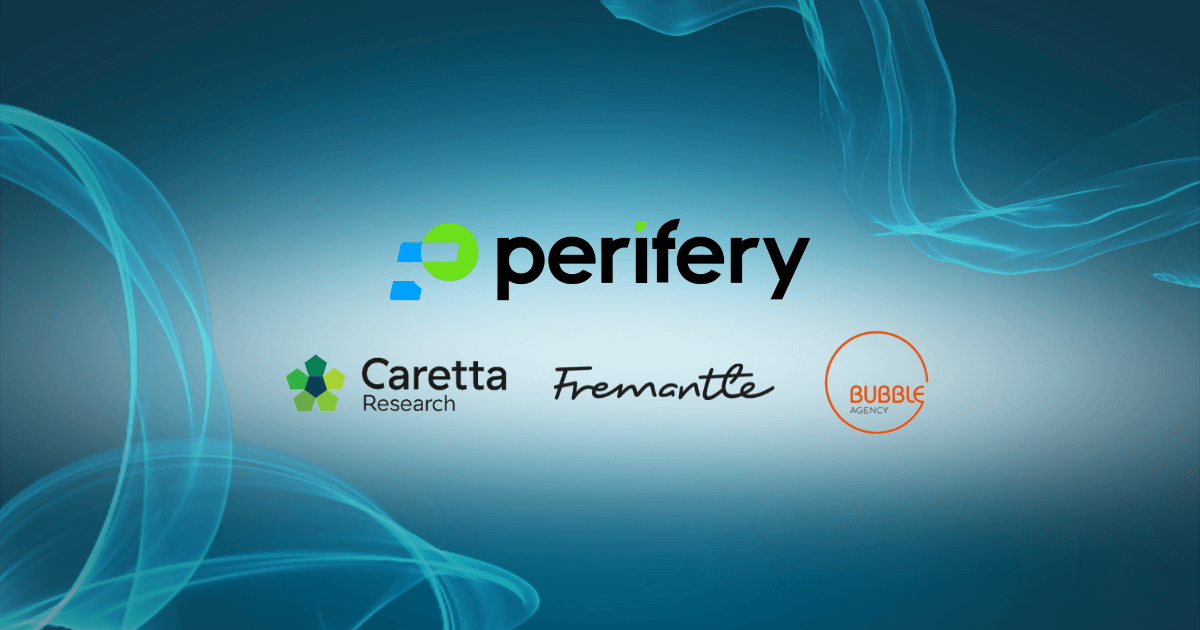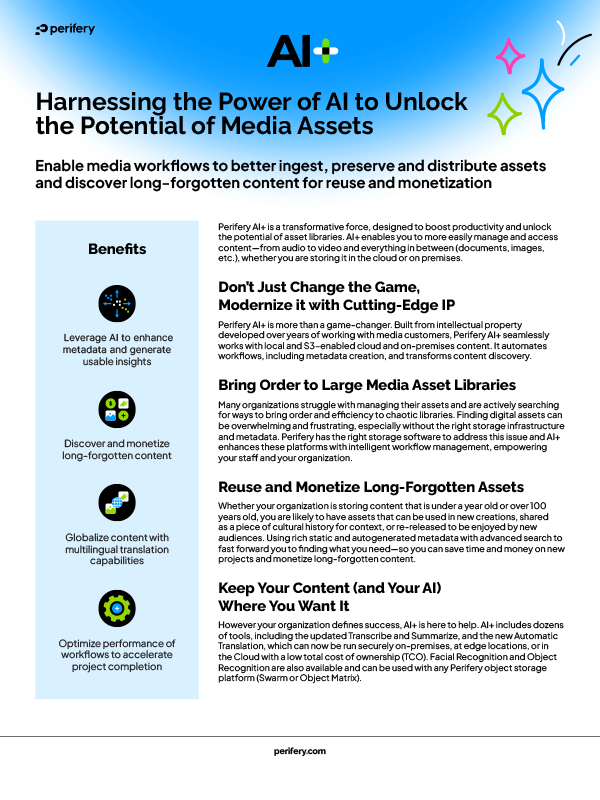
Summary:
In our July webinar, Perifery’s Peter Watling and George Maddocks were joined by Thalia Crone from Fremantle and Robert Ambrose from Caretta Research to discuss the RFP (Request for Proposal) process for storage procurement. The session was moderated by Danielle Harper from Bubble Agency.
Key insights from the discussion highlighted the need for a balanced approach between structure and flexibility. While buyers often prefer rigid structures, vendors favor more flexibility, and finding a middle ground is essential. It was emphasized that buyers should clearly define their must-haves while allowing vendors the opportunity to demonstrate their unique solutions. The challenges of rigid RFPs were also addressed, noting that they can exclude innovative vendors.
Effective communication and mutual understanding between vendors and buyers were identified as crucial elements for a successful RFP process. Rather than using RFPs as the final deciding factor, they should facilitate engagement and proof of concepts. The webinar concluded with an emphasis on the importance of these strategies in bridging the gap between buyers and vendors to optimize the procurement process. Watch the full webinar on demand for more detailed insights.
In our July webinar, we gathered a panel of experts to discuss the hot topic of RFPs – or Request for Proposals. Perifery’s Senior Sales Director, Peter Watling, and Solutions Architect, George Maddocks joined the panel to provide a vendor's perspective, with Thalia Crone, Global Head of Media Supply Chain Operations at Fremantle, sharing insights from a buyer's angle. Robert Ambrose, Media Technology Analyst and co-founder of Caretta Research also joined to offer his impartial input. The session was moderated by Bubble Agency Account Director, Danielle Harper.
Following the recent publication of a report on RFPs in the media industry (published by Caretta Research in partnership with Bubble Agency), Danielle asked Robert to share some of the findings into the risks of having too much, or too little, structure in the procurement process.
Pointing out that the report was based on feedback from both the buyers’ and vendors' perspectives, Robert shared how buyers tended towards too much structure and rigidity, while sellers preferred a freeform approach. He added that, ideally, there needs to balance, “You've got to have a bit of a structure in place to do the assessment, but not so much that you make the whole process impossible.”
When asked how, as a buyer, she balances structure and flexibility during procurement, Thalia noted that although it could be overwhelming, a well-defined RFP process ensures all requirements are met, while also allowing room for vendors to showcase their unique capabilities and innovations. Pete added that rigid RFPs and lack of openness tend to exclude smaller technology companies, despite these companies offering highly innovative solutions.
Moving on to discuss the buyer’s objectives, Danielle asked George how vendors ensure they fully understand the RFP before proposing a solution. George explained how proposals are made based on the best, yet realistic, solution recommendations. Although there is certain criteria to meet - and more spreadsheets and meetings to navigate - the RFP process isn’t that different from a typical architecting process.
Answering the question of how buyers can mitigate the limitations of rigid RFPs, Robert stated that RFPs can be an important tool and a good starting point. However, it should be used as a way of shortlisting, rather than deciding on a vendor. Robert stated that the objective of an RFP is “to find which is the best fit out there in the market, not to try and invent the utopian solution.” He added that buyers need to focus on what is important, the must-haves, and what is going to be the deciding factor. Once vendors are shortlisted, the buyer should focus on engagement, demonstrations, and proofs of concept. Vendors should also be given the opportunity to explain their approach to problem solving.
Asked how venders can address challenges, Pete explained that the RFP process needs to change. He highlighted that responding to RFPs is a resource heavy process, and usually ends in total silence. He added that for many technology providers, it usually isn’t worth all the effort. Pete also suggested that buyers need a better understanding of the technology that is available, and should be buying strategically for the future, rather than focusing on the now.
Danielle asked Thalia her thoughts on the early stages of the RFP process and whether the focus should be on high-level solutions or more granular details. Thalia agreed with Pete’s suggestion that buyers should do their research before issuing an RFP, however, the initial stages should be more high level, with finer details coming later down the line.
George added his thoughts on working with buyers, sharing that he will always make the best recommendations based on a future-proof solution. He highlighted that Perifery’s approach is very much focused on delivering what was promised and that communication between the vender and buyer is crucial. Robert added that the vendor is the expert; they know the industry, their product, and how the market is evolving. But on the other hand, the buyer knows their own workflow and is therefore responsible for explaining it, along with their objectives, to the vendor.
Continuing the topic of relationships, Pete explained how important conversations are. Having a better understanding of the solutions available and how they can fit into workflows and solve challenges over time is essential.
The webinar concluded with the panel sharing their final thoughts and key takeaways to remember during the storage procurement process. Find out what each panelist had to say in the webinar video.
When looking at the RFP process, it is clear that there are unique takes from both the vender and the buyer. While there are certain aspects that they can agree on, there is an obvious gap that needs bridging to optimize the procurement process from both sides.
If you missed the live webinar, you can watch it on demand. Catch up now.
